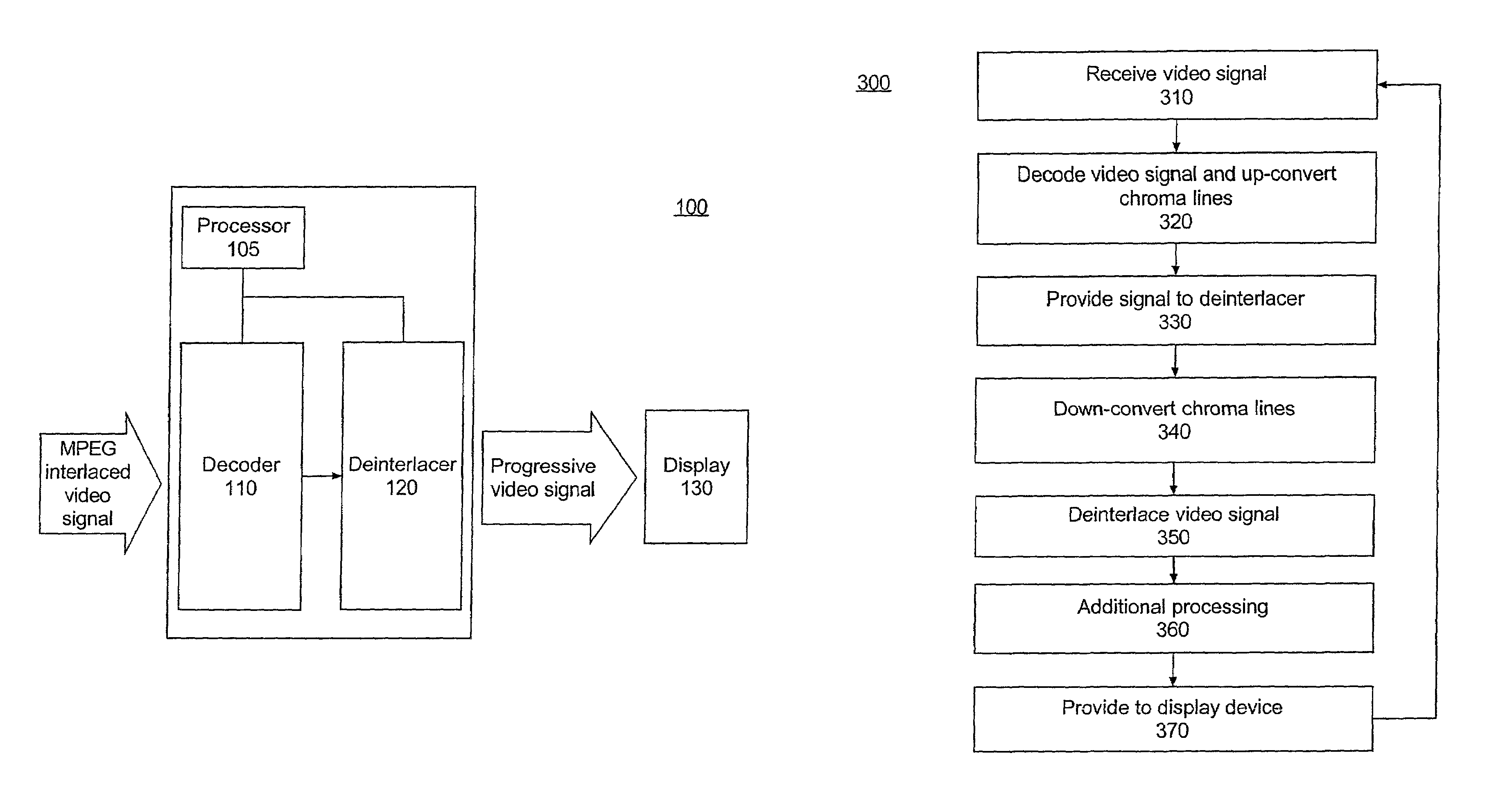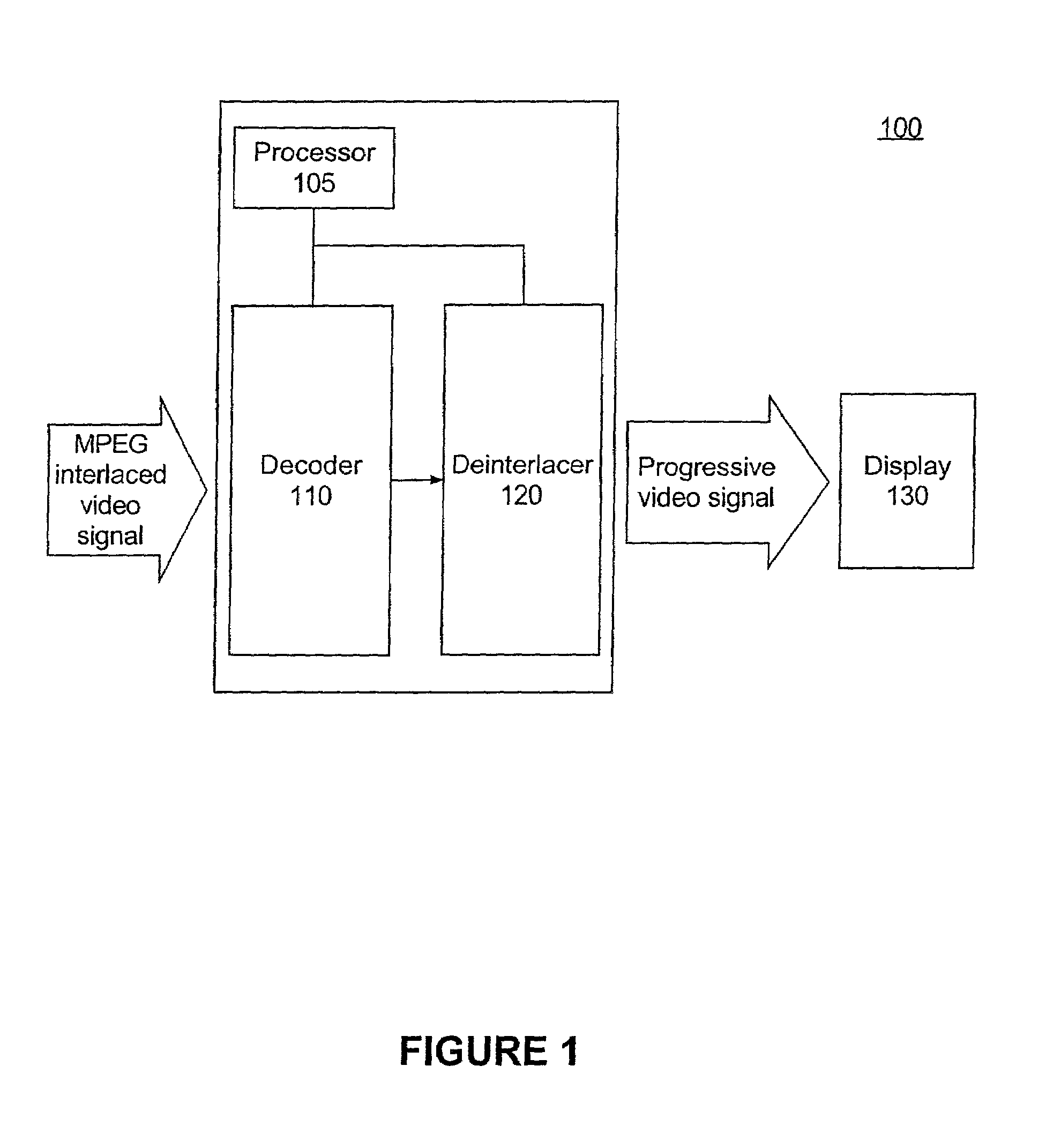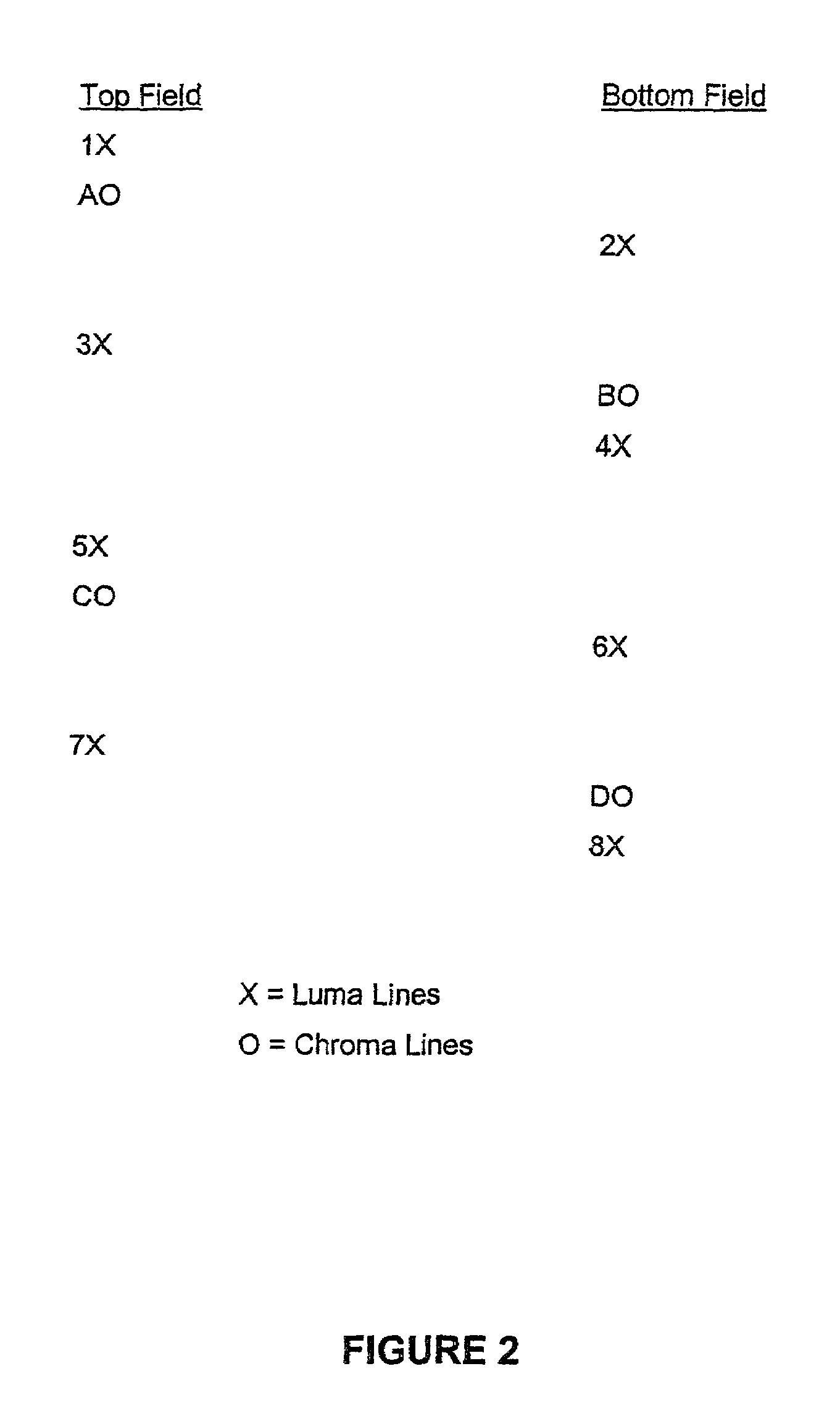Method and system for MPEG chroma de-interlacing
a chroma deinterlacing and chroma line technology, applied in the field of video signal processing, can solve the problems of further degradation of the chroma vertical resolution, and achieve the effect of reversing the step of increasing the chroma line and increasing the number of chroma lines
- Summary
- Abstract
- Description
- Claims
- Application Information
AI Technical Summary
Benefits of technology
Problems solved by technology
Method used
Image
Examples
Embodiment Construction
[0021]The invention disclosed herein provides a method and system for deinterlacing and vertically format converting an interlaced Moving Picture Experts Group (MPEG) video signal. In accordance with the inventive arrangements disclosed herein, the interlaced video signal is deinterlaced prior to vertically expanding the chroma component of the interlaced video signal. Accordingly, the invention retains a high degree of vertical resolution for the chroma component (which is, at most, 50% of the luma vertical resolution) when performing deinterlacing and chroma vertical format conversions.
[0022]FIG. 1 is a schematic diagram illustrating an exemplary system 100 for converting interlaced video formats to progressive video formats. As shown in FIG. 1, the system 100 can include an MPEG 2 video decoder module (decoder) 110, an interlace to progressive video processing system (deinterlacer) 120, and a processor 105. The decoder 110 can decode and convert a received, interlaced 4:2:0 forma...
PUM
 Login to View More
Login to View More Abstract
Description
Claims
Application Information
 Login to View More
Login to View More - R&D
- Intellectual Property
- Life Sciences
- Materials
- Tech Scout
- Unparalleled Data Quality
- Higher Quality Content
- 60% Fewer Hallucinations
Browse by: Latest US Patents, China's latest patents, Technical Efficacy Thesaurus, Application Domain, Technology Topic, Popular Technical Reports.
© 2025 PatSnap. All rights reserved.Legal|Privacy policy|Modern Slavery Act Transparency Statement|Sitemap|About US| Contact US: help@patsnap.com



